Conclusion
The ADATA LEGEND 970 PRO 2TB PCIe 5.0 x4 NVMe M.2 SSD was released from ADATA back in the latter half of 2024, offering a faster version of the original LEGEND 970 with improved cooling and sequential read and write performance. Utilizing an InnoGrit IG5666 controller instead of the popular Phison controller, the ADATA LEGEND 970 PRO 2TB PCIe 5.0 x4 NVMe M.2 SSD is able to offer up to 14,000MB/s sequential read speed and 11,000MB/s sequential write speed (4TB) of PCIe Gen5 x4 NVMe SSD performance. This is an improvement in sequential performance over the LEGEND 970, which was rated at 10,000MB/s read/write.
The ADATA LEGEND 970 PRO comes in three different capacities, ranging from 1TB to 2TB to 4TB, and each of those have varying rated speeds. The fastest is the 4TB model, with a 14,000MB/s sequential read speed and 11,000MB/s sequential write speed. The 2TB model has a 14,000MB/s sequential read speed and 10,000MB/s sequential write speed. The 1TB model has a 13,000MB/s sequential read speed and 9,500MB/s sequential write speed. All SSD models have a DRAM cache on board and utilize 232-Layer Micron TLC 3D NAND Flash. The TBWs vary as well, with the 4TB having 2,960TBW, the 2TB having 1,480TBW, and the 1TB having 740TBW. The model we reviewed is the 2TB SLEG-970P-2TCI.
Cooling
The goal of our temperature testing is to push the SSDs as hard as possible by performing a stress test of read and write. We run PerformanceTESTS’s advanced disk benchmark with a 10GB file, set to run each read/write test for 3 iterations, culminating in a 30-minute run. This is not typical usage behavior, but our goal is to find the maximum limits of the cooling, we run both without an external fan and with to see the differences a case fan will make. We utilize HWiNFO64 for reporting SSD temperatures.
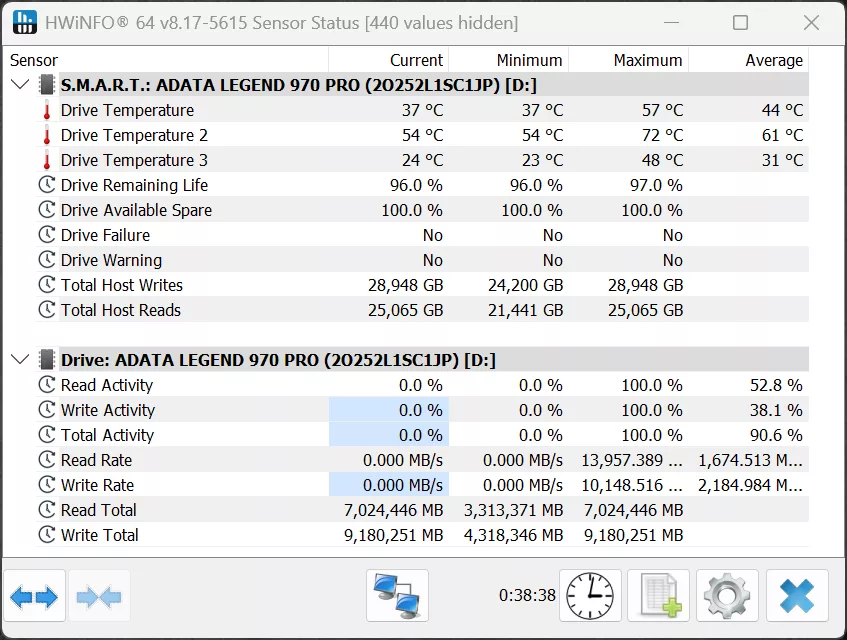
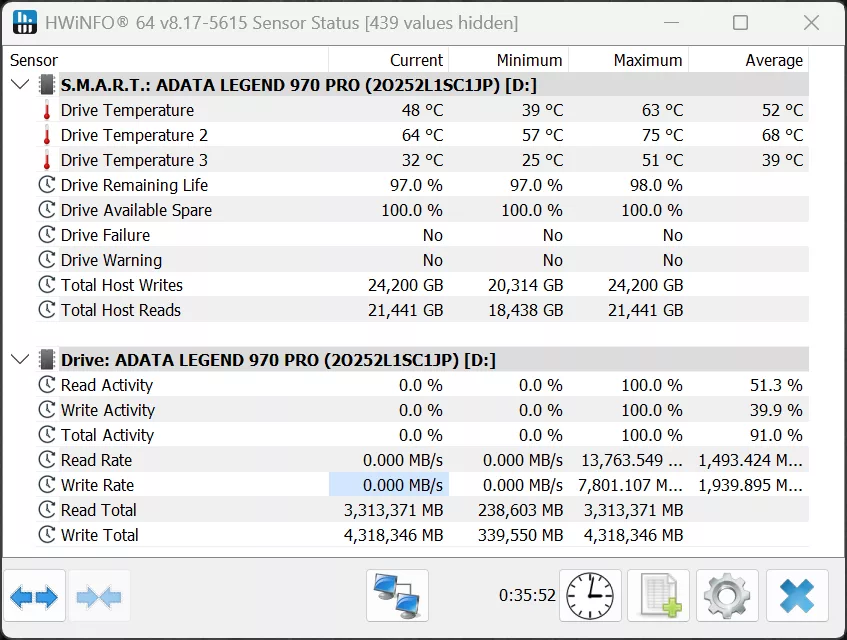
The ADATA LEGEND 970 PRO 2TB PCIe Gen5 NVMe SSD has an active heatsink and fan, so this helps the temperatures regardless of a case fan being involved, still we wanted to see how much that would help or not. First, without a case fan, the temperatures were not that bad, reaching 51c for the controller and 75c for the NAND flash, so even if your case cooling is poor, this SSD will stay plenty cool on its own in different builds. With a case fan blowing over it, temperatures reduce even further to 48c and 72c, so if you have decent case cooling and airflow, this SSD will have no trouble staying cool in any build configuration.
ADATA SSD Toolbox
ADATA offers a robust SSD management software called ADATA SSD Toolbox, and it really does offer a lot of features to utilize your SSD to its full potential.
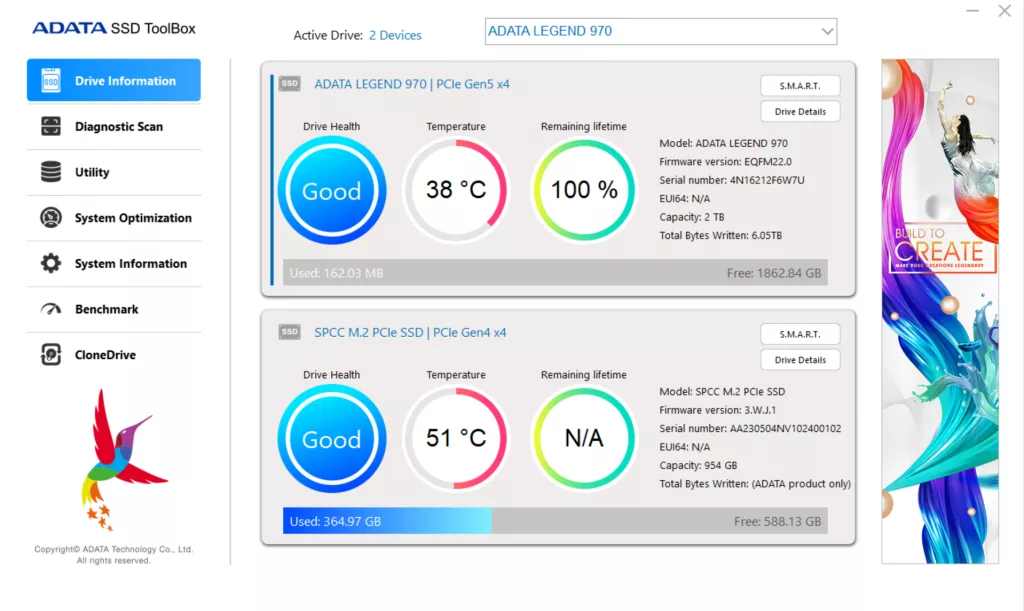
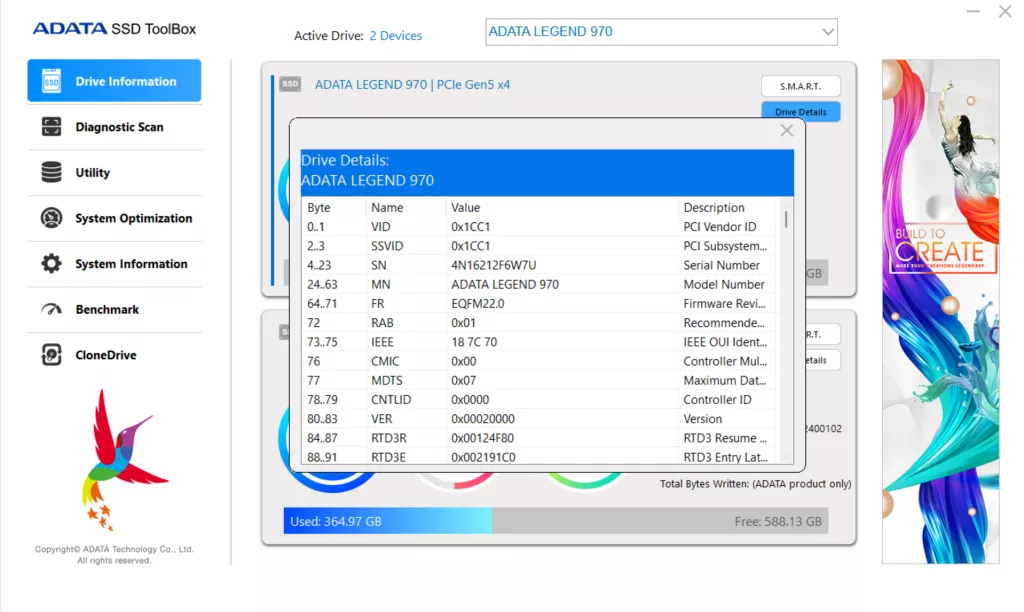
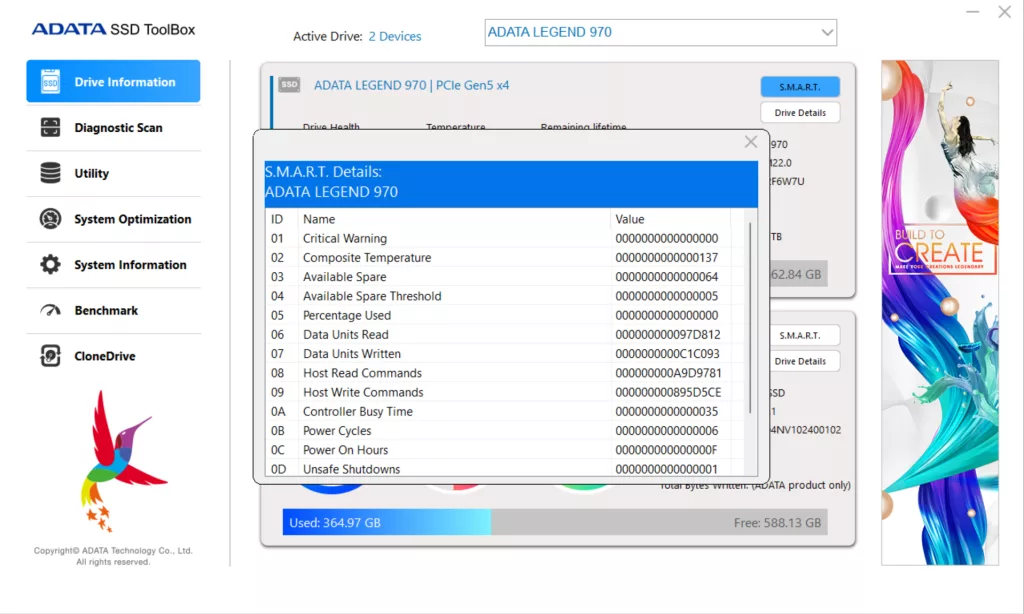
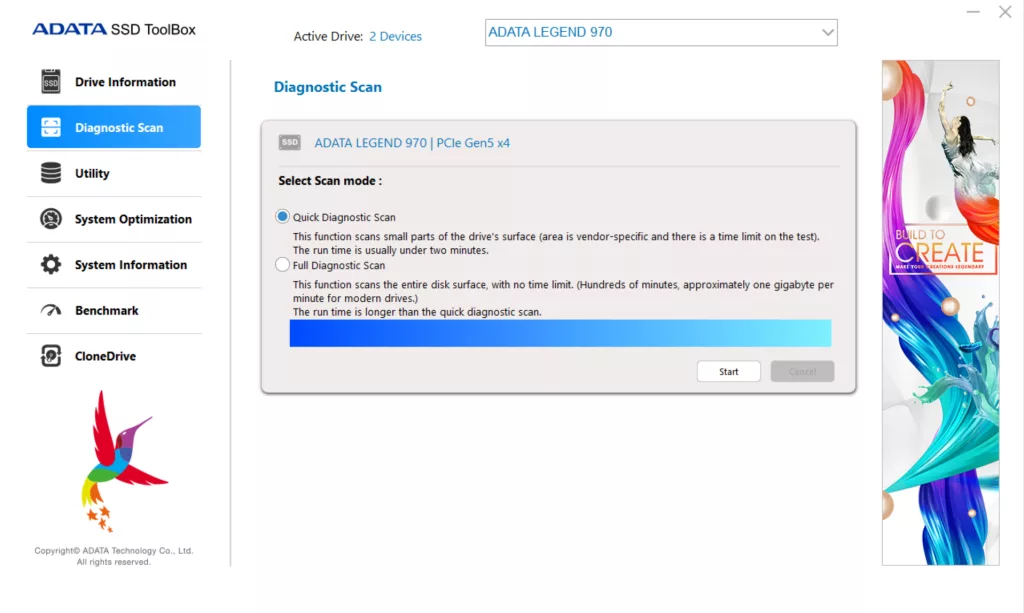
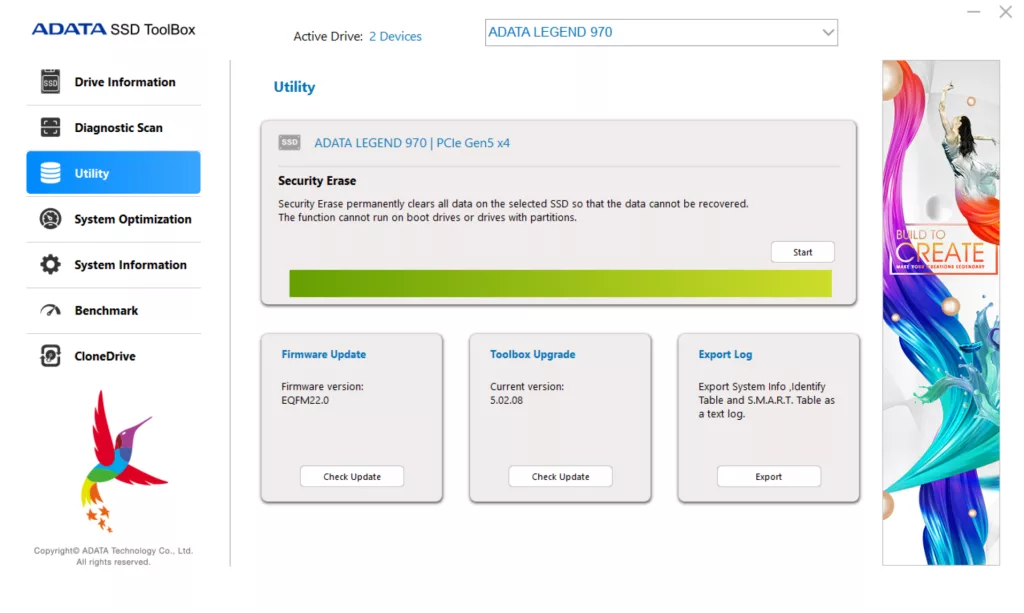
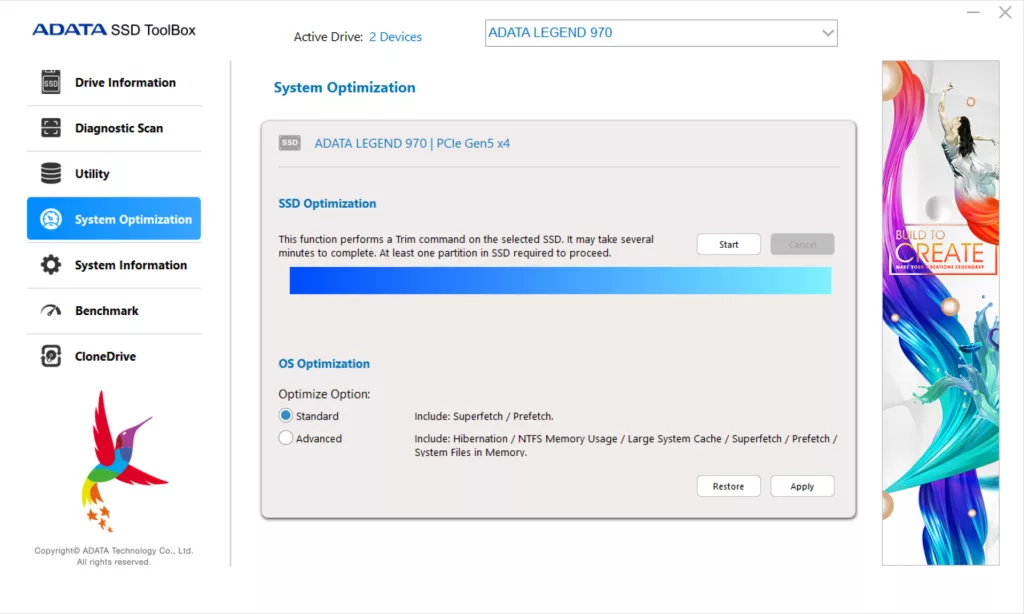
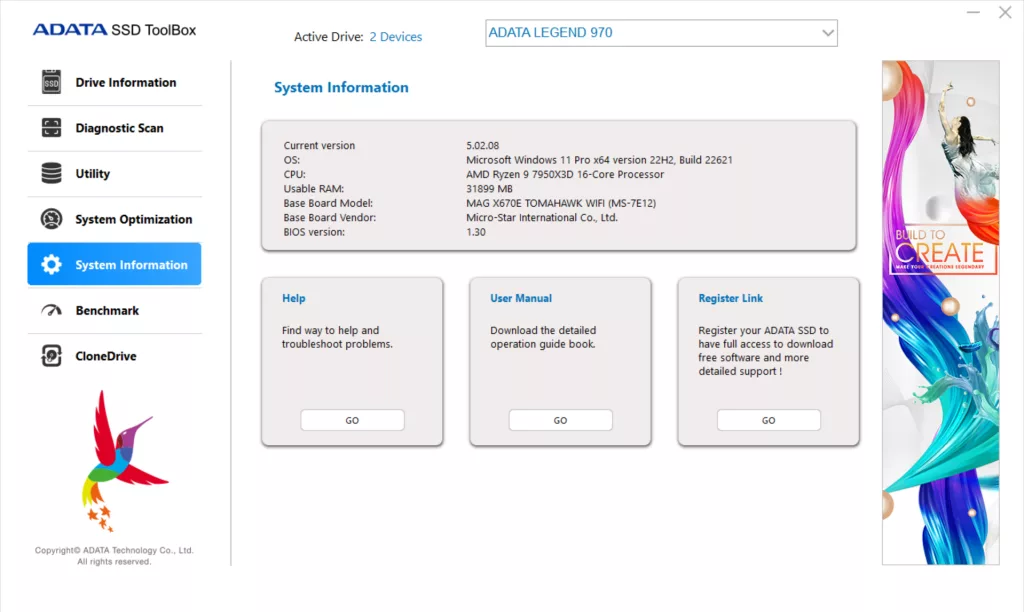
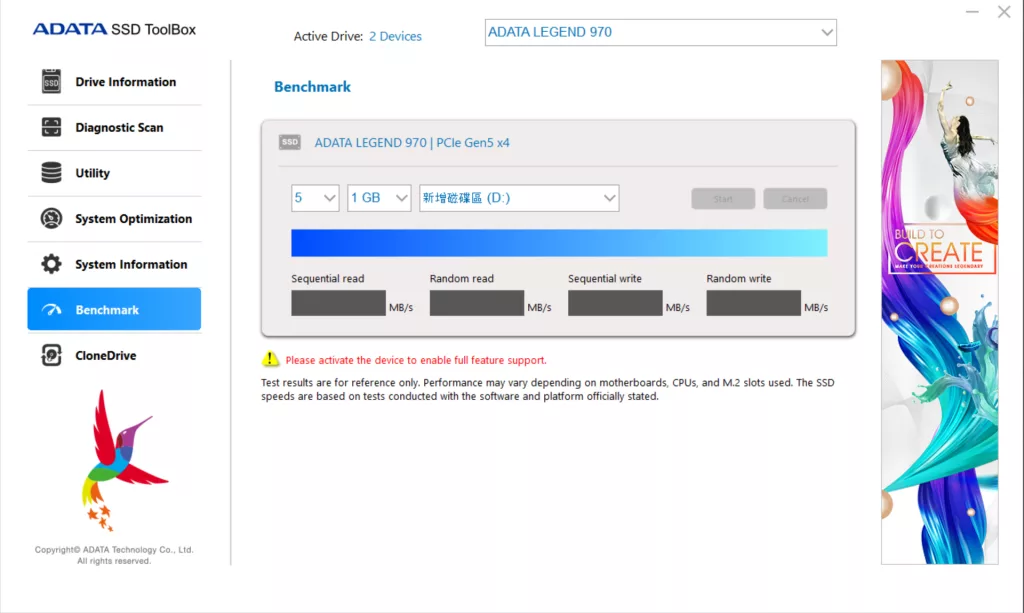
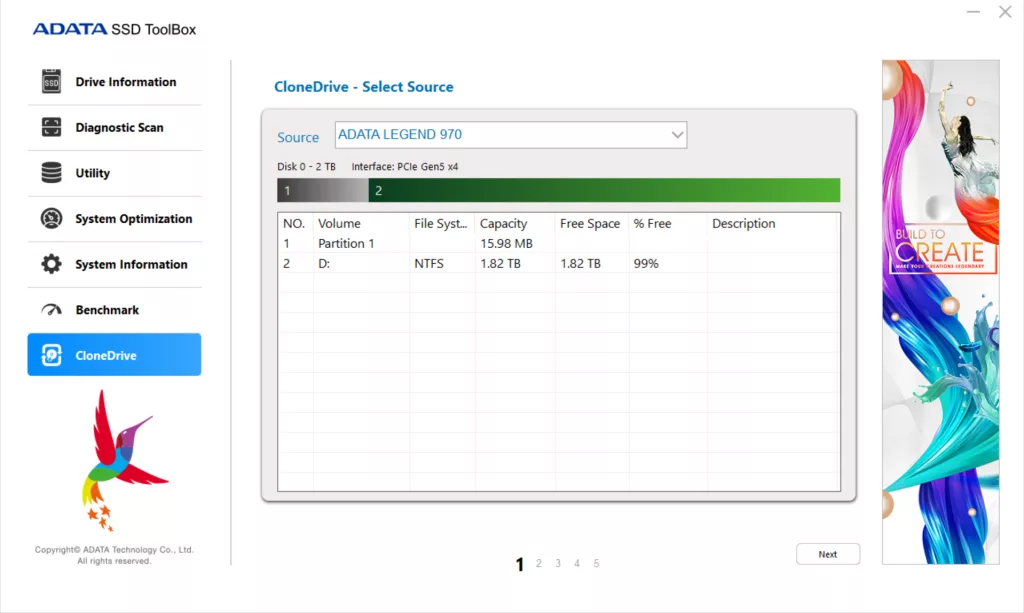
(Screenshots from ADATA LEGEND 970 SSD) Starting in the main menu, you are able to view the drive health, temperature, and remaining lifespan of the ADATA LEGEND 970/PRO. These metrics are extremely important in owning an SSD so that you may keep an eye on its lifespan and health. In addition, the temperature monitoring is a great bonus, so you can easily see how hot the SSD is getting and if it is getting to throttling temperatures. In addition, you can check the S.M.A.R.T. status and drive details from this menu as well.
The ADATA SSD Toolbox offers a quick and full diagnostic scan ability that scans your drive for errors. The SSD Toolbox also allows you to check for firmware updates and update firmware if needed, something we did check before testing. This ability is very important. It also offers a Secure Erase function to securely erase data on the SSD, another very important feature.
There is an SSD Optimization menu that allows you to enable Superfetch/Prefetch, as well as Hibernation/NTFS Memory Usage/Lare System Cache/System Files in Memory to optimize drive performance with Windows features enabled or disabled. There is also a built-in benchmark to check the SSD performance and track it over time. Lastly, the ADATA SSD Toolbox offers a CloneDrive feature, allowing you to clone one SSD to another or vice versa. This is a very handy ability, and it is built right into the SSD software, very nice.
Final Points
The ADATA LEGEND 970 PRO 2TB PCIe 5.0 x4 NVMe M.2 SSD is a mixed bag in terms of performance, but in terms of features, ease-of-use, usability, and practicality, it works. Let’s start with performance, we think it all simply boils down to the InnoGrit IG5666 controller that the LEGEND 970 PRO utilizes. The previous generation, LEGEND 970, used the Phison E26 controller, and Phison is well known to have very tight and tuned firmware and also really good hardware latency in its engine and bus. However, until the new Phison E28 controller is out, ADATA had to use a competitor to reach the 14GB/s sequential read speeds that the ADATA LEGEND 970 PRO SSD was reaching for. It does it; it reaches those claims, but it also has some other shortcomings.
Overall, the ADATA LEGEND 970 PRO SSD does reach the intended sequential read and write speeds that the SSD is rated for. We easily hit 14GB/s read and 10GB/s write, in both sequential and random performance. In fact, we were kind of impressed with its random performance, and depending on the queue depth and thread count, it actually competes quite well in this area with other SSDs in this class. Where it starts to fall behind is when you consider latency and other factors. In our testing, we saw it fall behind in the PCMark and 3DMark storage testing due to this. We also saw it fall behind in file copy performance and overall game loading times, but ever so slightly in that regard. It was also not going to offer the best workstation performance.
When all is said and done, in comparison to the previous ADATA LEGEND 970 SSD, the ADATA LEGEND 970 PRO offers an upgrade in terms of sequential and random, maximum throughput read and write performance. However, it falls short in every other regard. In terms of performance that actually matters for everyday use, the previous generation ADATA LEGEND 970 would be the better option. The ADATA LEGEND 970 PRO SSD, therefore, offers a limited upgrade in one aspect compared to the previous ADATA LEGEND 970. It is down to the InnoGrit controller, which, at the end of the day, just can’t keep up with the equivalent Phison in this category.
We are very pleased with the improvement in regards to the heatsink and fan design. ADATA put in the work and improved that design, melding the power of the fan to the PCB of the SSD and being powered completely by the M.2 slot with no external power needed was the correct move. It’s nice to see a fully powered active fan on an SSD without needing external power, and also in a slim profile for fitting into tight and small case builds. It will provide excellent cooling in small builds since it’s an active fan. This is a really nice cooling design, if a bit loud. We would like to see ADATA implement fan control software into its software suite to set up fan profiles.
For the right price, the ADATA LEGEND 970 PRO 2TB PCIe 5.0 x4 NVMe M.2 SSD could work; it always comes down to the price you can purchase it at. If you can find a good deal on an ADATA LEGEND 970 PRO SSD, and it is cheaper and in stock, it might be worth it at the right price, but that price will have to be affordable for it to make sense, you’ll absolutely want to shop around for the best pricing, and only choose if the price is right for you.




